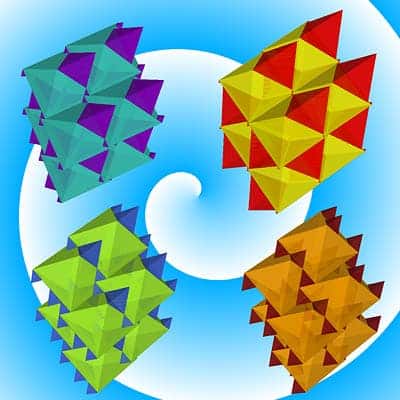
Whether its filling the space between oranges in a box or squeezing molecules between cells, wasted storage space is a problem to which people, and especially companies, have been trying to find a solution for a long time. A recently published research might lead to dramatic improvements of storage capabilities and in the field of material science, after successfully filling with no gaps a three-dimensional space with non-cube sized objects by “tiling” together solid figures known as tetrahedra (with four triangular faces) and octahedra (with eight triangular faces).
Finally answering the enigmatic mathematical riddle that has been pondered for so long now, Princeton University chemist Salvatore Torquato and colleagues have solved the conundrum, detailed in this month’s Proceedings of the National Academy Sciences published on June 20th.
“You know you can fill space with cubes,” Torquato said, “We were looking for another way.” In the article “New Family of Tilings of Three-Dimensional Euclidean Space by Tetrahedra and Octahedra,” he and his team show they have solved the problem.
The research was centered around “tilling”, or “tessellation” after the Latin word “tessella,” meaning a small cube or tile. Image tilling the floor of a room with a pattern, and then take to the 3-D level by adding height and filling the room. For Torquato’s research, that process involves fitting more complex three-dimensional “tiles” together, in this case the regular octahedron (a solid figure with eight triangular faces) and the regular tetrahedron (a figure with four triangular faces).
“The cube is one of five Platonic solids,” Torquato explained. “It is known that the other four Platonic solids (tetrahedron, octahedron, the 12-sided dodecahedron and 20-sided icosehedron) individually cannot tile 3D space. However, we’ve discovered new ways to combine tetrahedra and octahedra to tile 3D space.”
Like many other things, the process is present all over nature, be it crystals, the honeycombs in a beehive or the repeated densely packed structures in the center of a daisy.
“With a greater understanding of tilings, scientists can devise better and more realistic models for structures of matter; architects can come up with designs that balance function and appearance; mathematicians have new arrangements to analyze and study; and artists can work together with scientists to perhaps make new works of art,” Torquato said.



